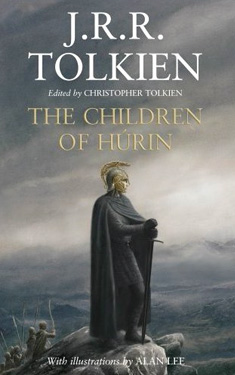JRR Tolkien
Completed 9/21/2018,
Reviewed 9/22/2018
4 stars
I feel like
I’ve written about this book many times before.
It’s because I have, when I read the History of Middle Earth Series, TheUnfinished Tales, The Book of Lost Tales, and The Silmarillion. This book is a full story version of the tale
of Turin, son of Hurin. It brings
together the different versions that Tolkien wrote into a single story. It’s a great tragic tale of doom. I like the tale a lot, but it is a difficult
read. It’s written in a very old style
of prose, with words we don’t use much anymore and complex word order. It definitely feels like you are reading ancient
lore.
This is one
of the earliest stories in the First Age canon.
It begins with Hurin going to Gondolin and then fighting in the Battle
of Unnumbered Tears. Hurin is captured by
Morgoth the Dark Lord and cursed to sit in a chair and with great sight forced
to watch the doom of his family unfold. Back
home, the town of Hurin’s family is overrun by evil men and though they are afraid
of the family of Hurin, they make everyone else their thralls. In fear of what these men might do, Morwen,
Hurin’s wife, sends Turin to Doriath to live and be raised by the elves. When he nears adulthood, he accidently kills King
Thingol’s number one advisor. Fearing
the wrath of Thingol, he flees to live as a bandit in the woods. Tragedy after tragedy unfolds as Turin and
his family make bad decisions.
The plot is
very depressing and there is no humor or comic relief in the book. Everything is deadly serious. The plot and the difficulty of the prose do
not make for a quick read. You get the
feeling that every word was carefully selected to convey the sense of doom. Even though this book is short, it took me
about five days to read.
Aside from
the toughness of the prose, I think another think that makes this a tough read
is that Tolkien throws a lot of names at you through the book, especially at
the beginning, with the story of Hurin and his eventual capture. Tolkien assumes you are familiar with the mythology. He throws in the names of the gods and some
of the more famous elves. Having read so
much of the mythology in the Tolkien’s other works, I was familiar with
them. But even I had some trouble
remembering who was who. Christopher Tolkien
provides an introduction that explains some of the names being used, including
the different names for the Elves and some of their geneology. It was a good refresher for me, though I still
found some of the names to be confusing in the actual text of the book.
I give the
book four stars out of five, knocking off one star because of the difficulty of
the prose. Also, after reading the story
of Turin so many times, I wasn’t drawn into the despair of the doom. I knew what was coming, so I didn’t become as
emotionally involved as I think I would have reading this for the first time. I think if you want to read this book, you
should read the Silmarillion first, to get a handle on the mythology of Tolkien’s
universe.

No comments:
Post a Comment